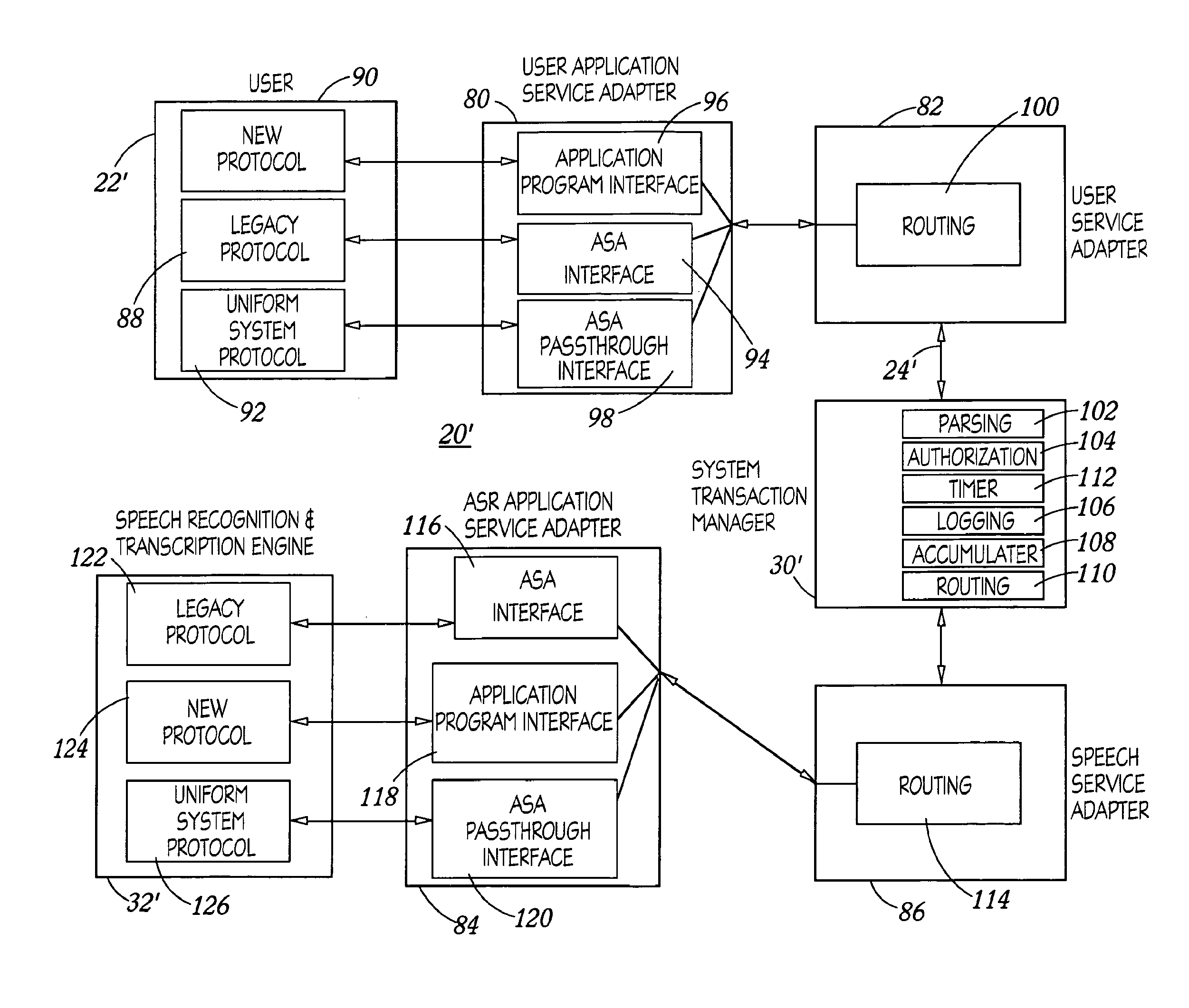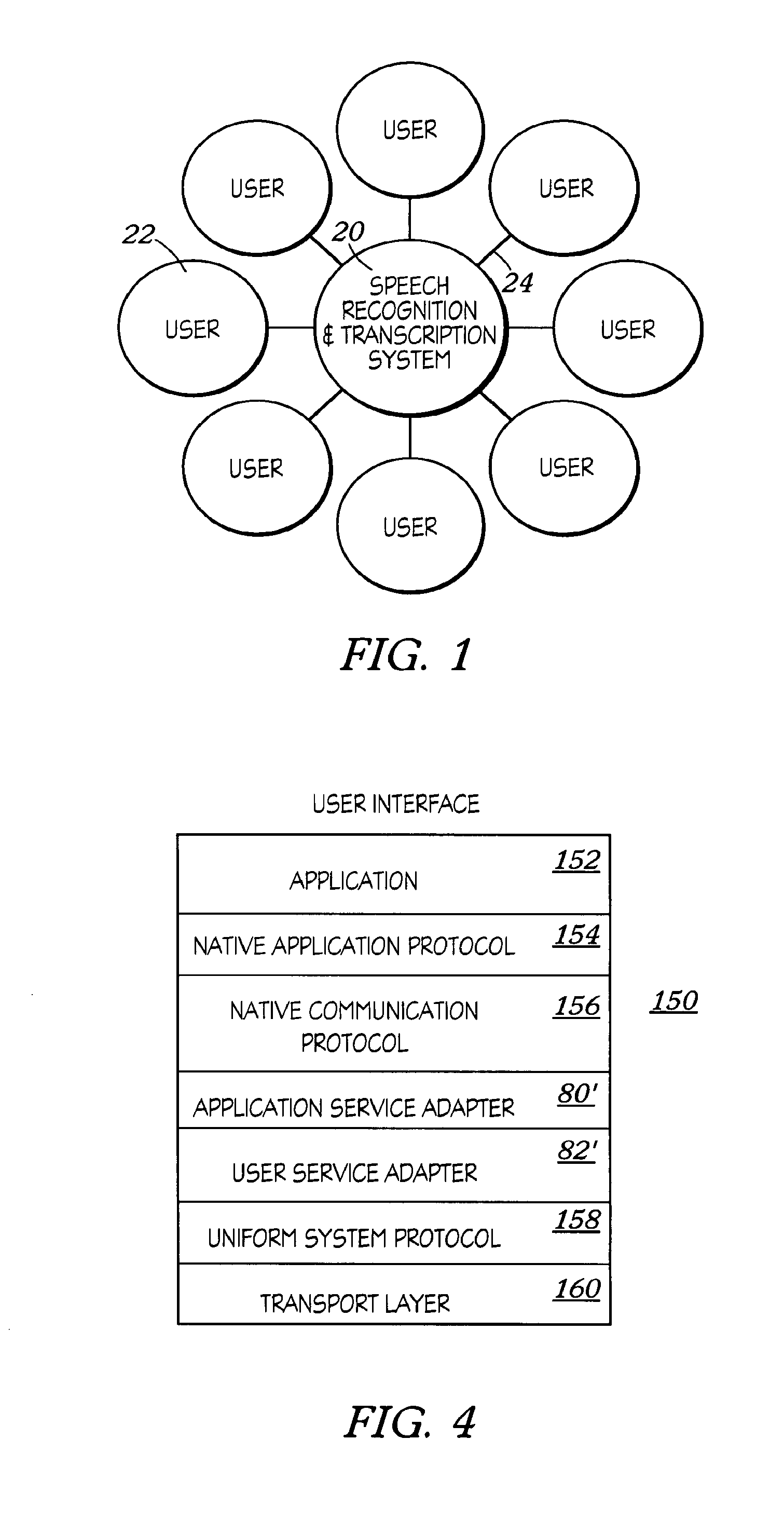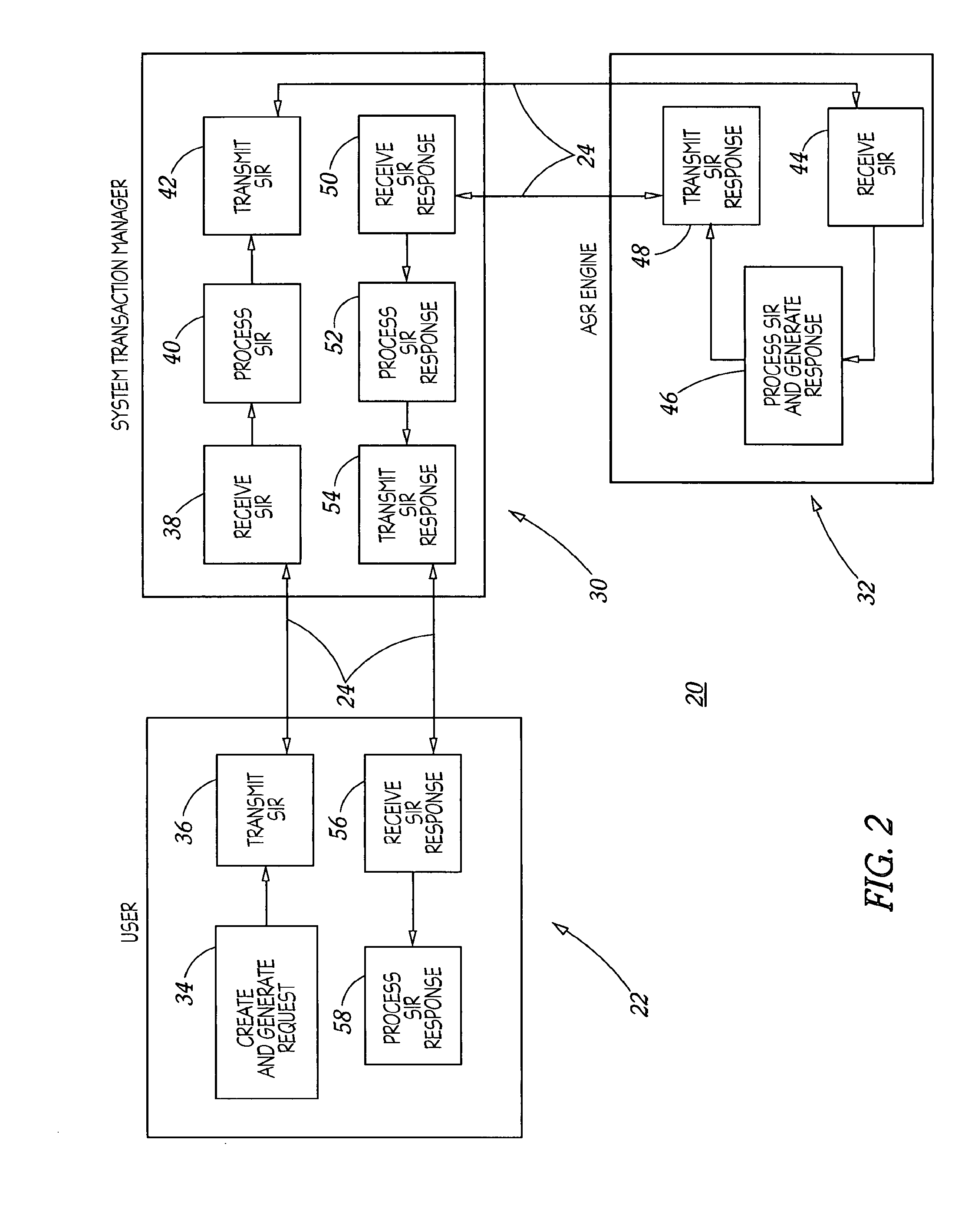Speech recognition and transcription among users having heterogeneous protocols
a heterogeneous protocol and speech recognition technology, applied in speech recognition, speech analysis, data processing applications, etc., can solve the problems of not being able to recognize pre-compiled artificial grammars suitable for normal dictation, the likelihood of their failing to recognize a word tends to increase with the size of the system's vocabulary, and the system's current voice recognition system is usually far from foolproof, so as to facilitate speech recognition and transcription
- Summary
- Abstract
- Description
- Claims
- Application Information
AI Technical Summary
Benefits of technology
Problems solved by technology
Method used
Image
Examples
Embodiment Construction
[0031]The following terms and general definitions are used herein to describe various embodiments of a Speech Recognition and Transcription System (“System”).
[0032]Applications Programming Interface (API): A set of services or protocols provided by an operating system to applications (computer programs) running under its control. The API may provide services or protocols geared to activities of a particular industry or group, such as physicians, engineers, lawyers, etc.
[0033]Application Service Adapter (ASA): An application layer within the Speech Recognition and Transcription System that provides an interface among Users, Speech Recognition and Transcription Engines, the System Transaction Manager and other System components by allowing a User's existing application and / or a System components application to communicate with the Transaction Manager. Thus, for example the ASA provides a bi-directional translation service between the User's Native Communications Pro...
PUM
 Login to View More
Login to View More Abstract
Description
Claims
Application Information
 Login to View More
Login to View More - R&D
- Intellectual Property
- Life Sciences
- Materials
- Tech Scout
- Unparalleled Data Quality
- Higher Quality Content
- 60% Fewer Hallucinations
Browse by: Latest US Patents, China's latest patents, Technical Efficacy Thesaurus, Application Domain, Technology Topic, Popular Technical Reports.
© 2025 PatSnap. All rights reserved.Legal|Privacy policy|Modern Slavery Act Transparency Statement|Sitemap|About US| Contact US: help@patsnap.com



